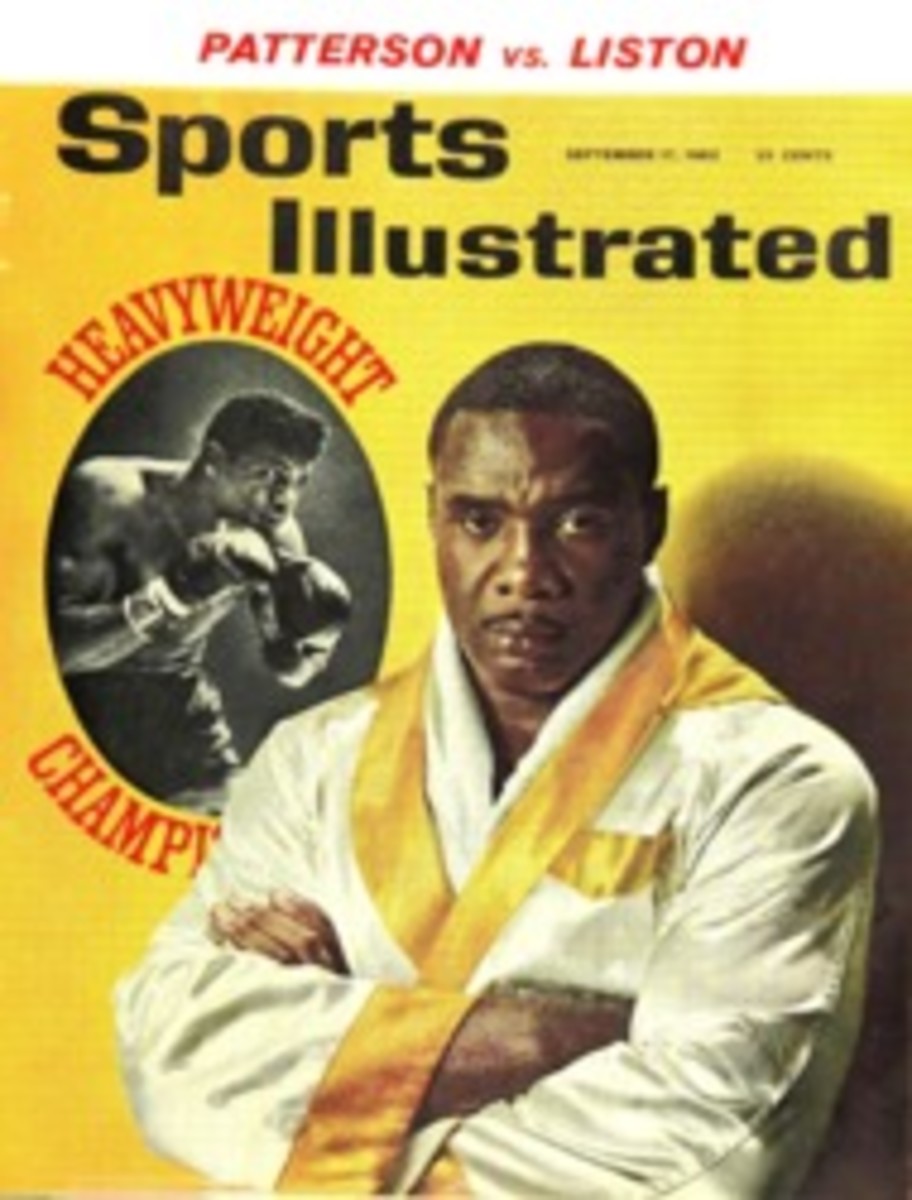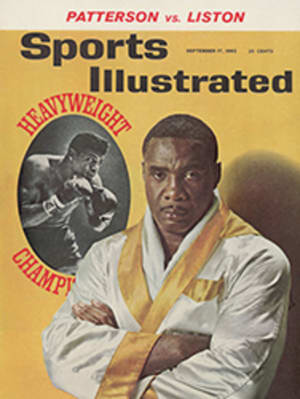
Rod rockets into orbit
There was something for everybody at the 81st National Singles Championships at Forest Hills, N.Y. last week. Next to the stadium, in which each day's most promising matches were held, there was a shiny new automobile, put there, said the sign, as a salute to the U.S. Lawn Tennis Association. Beneath the stadium's concrete arches there was a machine that boomed tennis balls at any customers who cared to face it. If they were able to volley its serves back into a small, round target they got a prize. There was a show of tennis fashions for those who would rather look than play. "We do applaud white for tennis," intoned a fashion-wise lady, herself accoutered in a cloth coat with a fur collar, "but green might be a new color." Models paraded by in green sweaters. Models in old-fashioned costumes pirouetted past. "It is said," commented the fashion lady, "that one player always wore a cake of ice under her hat."
For nostalgia there was the exit in the qualifying round of one Hugh Sweeney, who may quite possibly be the last man ever to play tournament tennis in long white flannel pants. For those who liked tennis there was comedy and drama alike in a tensely fought match between clumsy but crafty Whitney Reed and Mexico's dogged Rafael Osuna, a match that ended after five grueling sets with Reed hurling himself through the air into Osuna's outstretched arms. There were a number of dramatic upsets, including those of sixth-seeded Jan Erik Lundquist of Sweden by aging Vic Seixas and of Wimbledon Champion Karen Hantze Susman by 17-year-old Vicki Palmer—indelicately nicknamed The Grunter.
For connoisseurs of mystery, there was the unanswered question of what became of Nicola Pietrangeli of Italy, seeded No. 7. Nicola just plain didn't bother to come, but to make up for his absence, and to add a special spice to the tournament, there was the largest aggregation of foreign entrants ever to take part in a U.S. tournament—more than 110 players from 34 countries, many of them brought from Europe in a special airlift sponsored by the People-to-People Sports Committee.
The foreign players included a women's Wimbledon finalist, Vera Sukova of Czechoslovakia, Germany's pert brunette Helga Schultze (SI, Aug. 27) Margaret Smith of Australia, bearded Jorgen Ulrich of Denmark, Maria Bueno of Brazil, cheerful Reino Nyyssoenen of Finland and the first Russians to play at Forest Hills. None of the Russians—Davis Cuppers Tomas Lejus, Sergei Likhachev, junior champion Alexander Metreveli and the women's champion, Anna Dmitrieva—got very far in the tournament, but everyone was impressed with their good manners, earnestness and restraint when they got bad calls. All of them used the American twist service.
For true tennis fans, however, the real thrill of this year's nationals was the attempt of Australia's Rod Laver to become the first man since Don Budge in 1938, and the second in history, to achieve the tennis Grand Slam by adding the U.S. championship to those he had won in Australia, France and England.
Already the holder of this year's Italian, Netherlands, Norwegian and Swiss championships, in addition to the big three, this hawk-nosed, freckle-faced, bowlegged Australian is a prime product of the almost unbeatable Australian system of spotting, nurturing and financing its best tennis players from the cradle. The son of a grazier (cattle rancher), Laver was exposed early and often to tennis. His father was one of 13 children—all tennis players. He met and wooed Rod's mother at the tennis matches in Queensland, in the town of Dingo (named after the Australian wild dogs). There were tennis courts adjoining every ranch and city house the Lavers lived in. Rod's father sometimes had to cook dinner, because Mrs. Laver was out on the courts batting tennis balls around with the children. Rod, the first redheaded, left-handed Laver, played his two older brothers from the time he was six. He used a hand-me-down racket with a sawed-off handle.
In Rockhampton the Lavers won all the tournaments in sight—mother and father winning the singles and mixed doubles and the kids splitting up the various age championships. When he was 13 Rod competed against his brother Bob for the Central Queensland junior title. Because the finals were a family affair, they were held on the Laver home court. Bob won a close match over Rod, who could hardly see higher than the net. A short while later Rod got the break most Australian youngsters hope for, when he was selected to attend a tennis course sponsored by a major Brisbane newspaper. He caught the eye, inevitably, of the man running the course, Harry Hopman, the panjandrum of Australian tennis, and the lid was nailed on his future. When a case of jaundice interrupted his school work, Rod told his father, "The other blokes have had two months' school that I missed, and I want to quit. I don't want to be the galah (Aussie for "jerk") that failed."
With his father's consent, Rod left school at 15, and through Hopman got a job with a sporting goods firm in Brisbane—the kind of job that pays a tennis player whether he is there to punch a time clock or not. With Hopman to coach him, and some of the world's finest competition to spur him on, Laver toughened up his game while languishing in the shade of Hoad and Rose-wall. Australia's tennis officials—unlike the guardians of American athletes—professed no worry about Laver's lack of formal schooling in more academic fields.
Although he has traveled over most of the world Rod Laver at 24 is almost painfully uncommunicative. Coached in his early years by Hopman not to say anything to the press, he is so well disciplined that he will hardly admit he is left-handed. After winning the Wimbledon tournament last July by demolishing his countryman Martin Mulligan 6-2, 6-2, 6-1, Laver admitted he thought he had played quite well. When he was asked if he thought there was a jinx on his winning the U.S. championship he said, "Anyone who thinks that is bein' tyken in by a hoax."
Laver plays a good game of golf, does a mean Charleston, thinks the grass at Forest Hills is too soft (as do the Russians), likes to watch baseball, and will probably turn professional for $100,000 after Australia's defense of the Davis Cup next December. In view of these prospects and his current fame, it might be argued that stopping school at 15 was unimportant for Laver.
Laver uses his wrist more than any other player in history except Frank Kovacs and he is the first player to combine a whipping wrist action with near-perfect control. Laver can hit a ball fiat, with topspin or with underspin, equally well from both sides. Like a squash player, he adds power to a shot and disguises its direction by putting wrist into his shot at the moment of impact. Few players have his repertory of strokes, and no player has been able to mask his shots better. He has tremendous kick on his serve, and his second serve finds its twisting way so deep in the service court that it often hits the chalk. But perhaps his greatest ability is to make forcing shots of returns that most players would be happy to get back at all. He is cool, too. Last July the jet that was carrying him to matches in Hilversum, in The Netherlands, suddenly dived sharply to avoid colliding with another plane. Thirteen passengers had to be carried off the plane by stretcher-bearers, while the remainder left considerably shaken by the experience. Laver changed clothes, marched out onto the court and easily defeated his opponent. A Dutch official commented, "He nearly gets killed and then he comes out here and plays as if nothing had happened." Add to all this the most effective smash in amateur tennis today, the most lethal serve any man under 5 feet 10 has yet uncorked, an uncanny ability to hit finishing volleys from almost anywhere in midcourt (Laver never just puts the ball in play) and the fact that his left-handed shots curve and spin exactly opposite to what his opponents are accustomed to—and Rod Laver becomes a formidable opponent indeed.
In one seemingly effortless match after another at Forest Hills, Rod Laver demonstrated this fact to, respectively, Israel's Eleazar Davidman, Ecuador's Eduardo Zuleta, Germany's Bodo Nitsche, Mexico's Antonio Palafox, Florida's Frank Froehling, Mexico's Rafael Osuna and, finally, his own countryman, Roy Emerson, the defending champion.
Aussie sweep
Considering the stakes, the pressures weighing on Laver as he went against Emerson—who had taken him in straight sets last year—were enormous. However, Rocket Rod faced his opponent as cool as a koala, and used the same tactics against him that he had used the day before on Osuna. He hit wildly spinning, hard, shoetop-high shots almost impossible to volley. Very often he hit the ball so fast that Emerson could merely watch as it skimmed by. On service, as usual, he was all but invincible. For a brief moment early in the third set Laver grew careless, and Emerson, taking heart, won the set 7-5. But in the final set Laver broke service in the very first game and was never headed. His three-sets-to-one victory for the coveted Grand Slam was almost an anticlimax. Rod tossed his racket in the air, put a towel to his face, leaned wearily against the umpire's stand and finally—for the first time in the tournament—smiled.
Laver's triumph was a personal one, but it capped an unprecedented all-Australian sweep of the U.S. tournament. Not only had two Aussies contested the men's finals but, for the first time ever, an Australian girl, Margaret Smith, had won the women's championship. Titian-haired Margaret, 20-year-old daughter of an ice-cream packer, is big-boned, determined, earnest and skilled. Margaret has been ostracized by Australian tennis officials for sassing her elders and refusing to take orders from her team mother. None of the other Aussies were allowed even to practice with her at Forest Hills. But these things seemed to trouble her not at all as she beat twice-champion Darlene Hard 9-7, 6-4 in a finals match notable mostly for bad calls and a weeping spell by Darlene. To finish up, the Australian team of Smith and Fred Stolle won the mixed doubles. There was something for everybody at Forest Hills, all right—but it helped if you happened to be an Australian.
PHOTO

